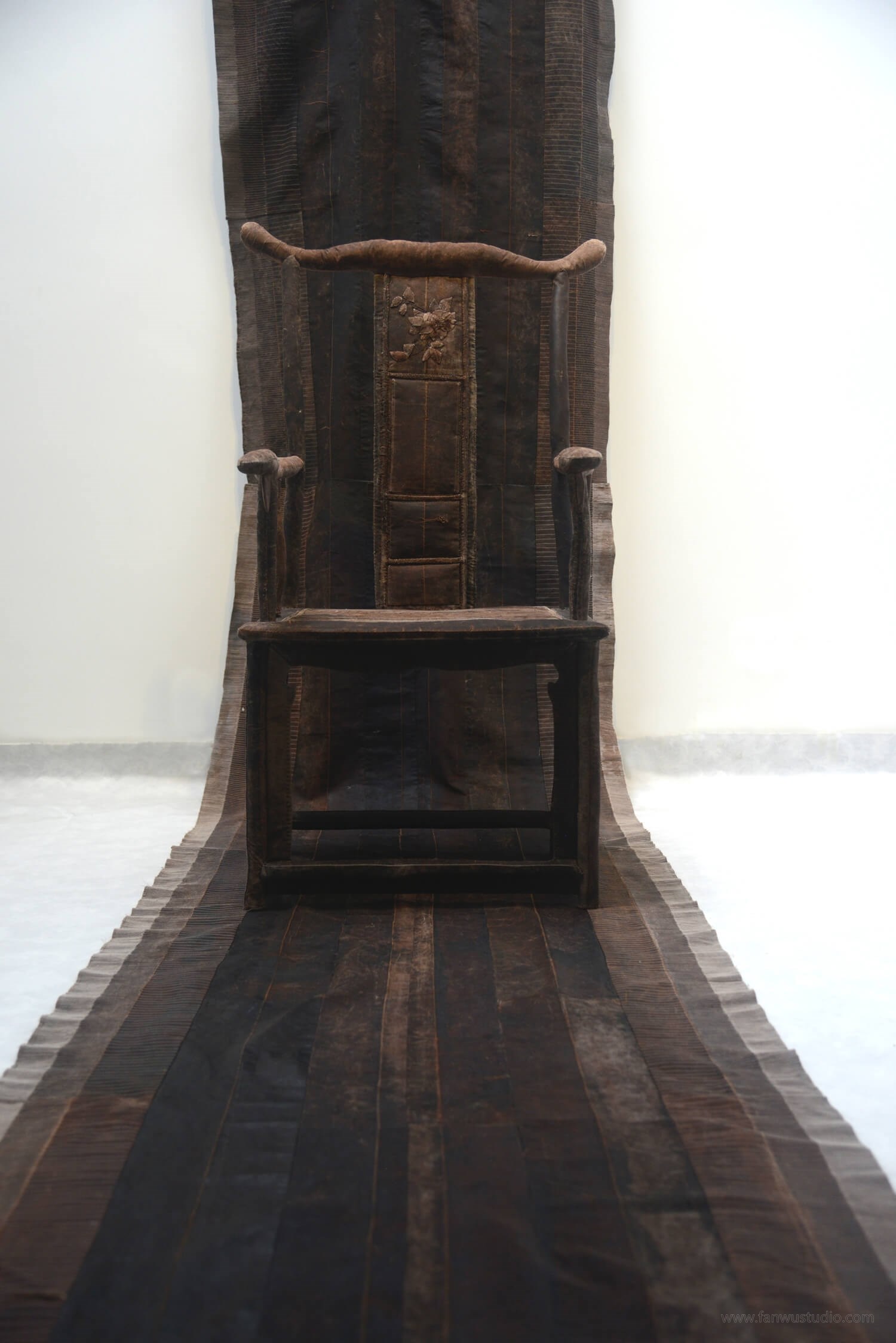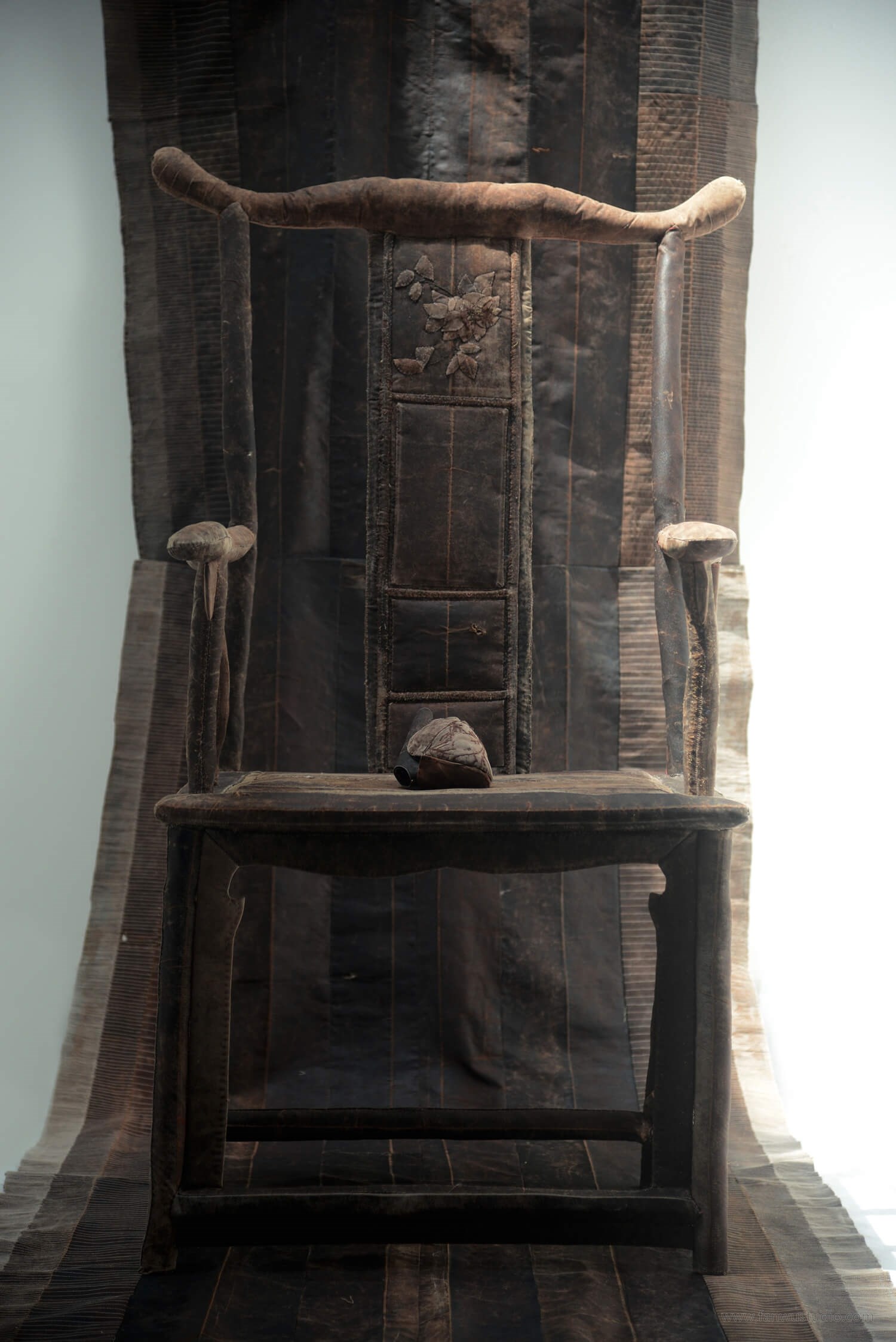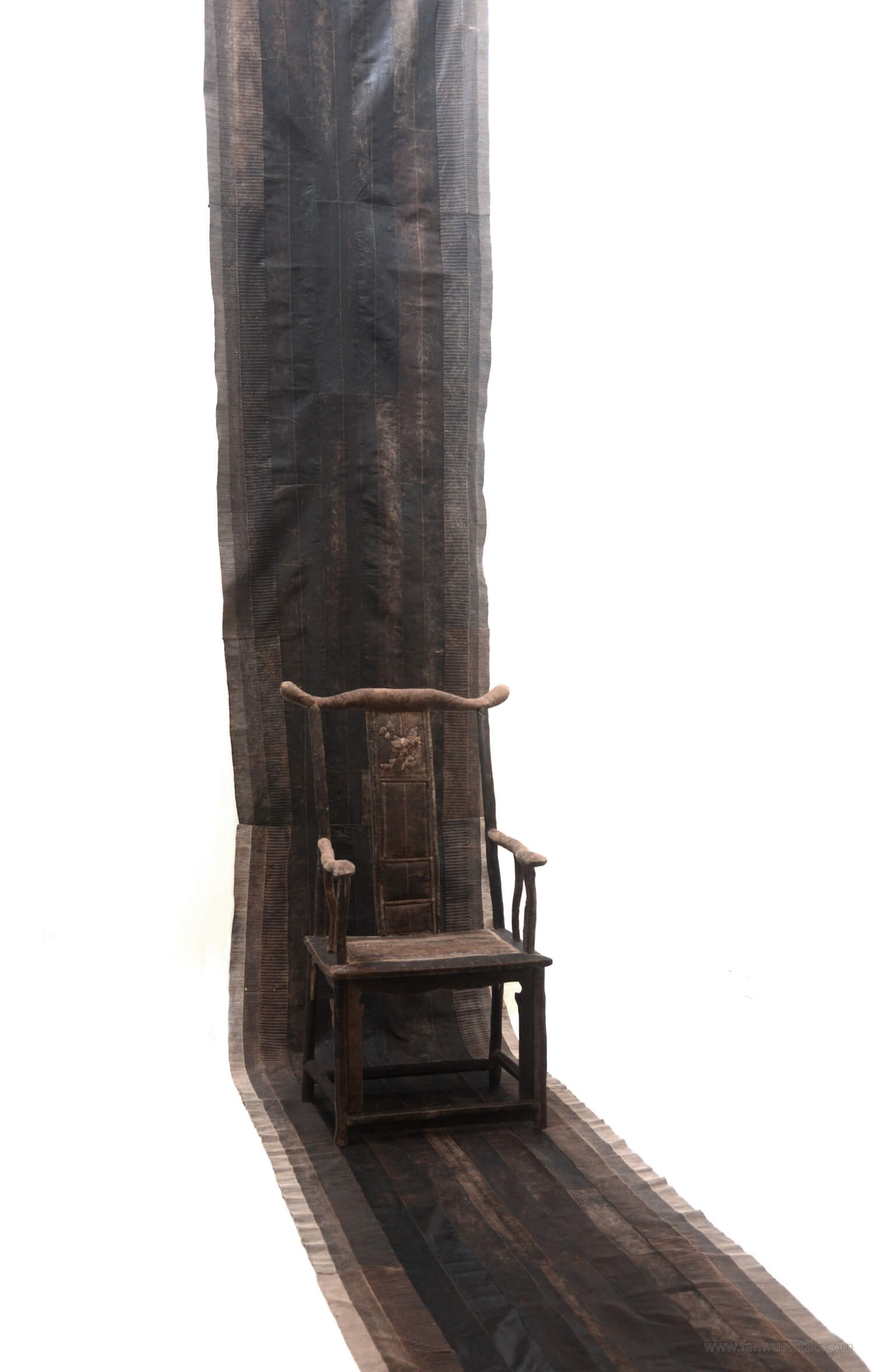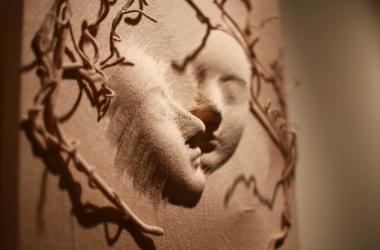《方寸论》原文出自禅宗四祖--隋唐高僧道信大师對牛頭法融的開示,文中有一段写道:"祖曰:境緣無好醜,好醜起於心,心若不強名,妄情從何起?妄情既不起,真心任偏知。汝但隨心自在,無復對治,即名常住法身,無有變易。"寓意大致为:"心意识"是什么?是"我见"。心意识动了,便有'我',那个我是"小我","真我"是如同宇宙那么大,无限自由的我。
作品借《方寸论》之名,以视、听语言呈现一种情境--近之则"心"动,远离则"心"静;提出问题:人在面对权力与诱惑、戒律与规则时应如何分辨与修正自我"心意识"中的"小我"与"大我"?
备注:心脏里安装了一个“程序控制心跳模拟器”,它的技术原理:通过雷达感应器感知周边环境及人体移动,将信号送入计算机,由计算机编程模仿人体心跳的节奏,输出至执行机构(由推拉式磁铁模仿心跳动作)。硬件支撑:通过3D制图及3D打印完成。总工作电流300毫安。在2米范围内有人体靠近时雷达会感应到,心脏开始跳动;人体离开后2秒,心跳自动停止。
It’s narrated in 方寸论 the enlightenment bestowed upon Farong of Ox-head Mountain by Master Daoxin, a highly-esteemed monk in Sui and Tang Dynasties and the 4th Buddhist Patriarch. A paragraph goes, “Buddha said, there is no objective truth about beauty or nonbeauty, but only one’s subjective judgement on all beings. If the Mind never judges, it will never be misguided by vanity; Were there no vanity, the Mind’s understanding of truth would be free of prejudice. The moral of the teaching is: “What is the Consciousness of Mind? Sentiments and Narratives. The flow of mind breeds self, however a trivial self; the ultimate True-Self is as enormous as the universe, as free as freedom can be. The work contextualizes the idea presented in ⽅寸论, integrating visual and audio mediums to revive its profound message –One’s mind is agitated when yielding to temptation; conversely, at peace when free from it. It further provokes the viewers to ponder over this fundamental issue: when stepping upon the boundary between temptations from fame and precepts for life, how should one distinguish the trivial self from the True-Self upon the Consciousness of Mind and correct his behaviors accordingly?
Note: a "program-controlled heartbeat simulator" is installed in the heart. It works by sensing the surroundings and movements of human body through radar sensors, sending signals to a computer that is programmed to mimic the rhythm of the human heart and output them to an actuator (a push-pull magnet mimics the heartbeat). Hardware support: completed by 3D drawing and 3D printing. The total operating current is 300 mA. Radar detects when a person approaches within two meters and the heart starts beating. Two seconds after the person leaves, the heartbeat automatically stops.














